From Access to Influence: What Gaborone Taught Us About Trust, Inclusion and Truth
21st International Electoral Awards & Symposium · Avani Hotel, Gaborone · 1–4 October 2025
If you had to distil this year’s Symposium into one idea, it would be this: elections earn legitimacy when we design for people first, prove integrity at every step, and protect the information space where consent is formed. Over three days of keynotes, conversations and panels—and an evening celebrating excellence—the programme moved purposefully from foundations of trust, to practical inclusion, to technology that deserves confidence, and finally to information integrity in an AI‑accelerated world.
1) Trust by Design: Institutions that signal fairness
Our opening theme asked a simple question: what convinces citizens that the referee is neutral? Botswana’s Chief Justice, Hon. Justice Gaolapelwe Ketlogetswe, argued that the answer is structural as much as it is cultural. EMBs earn trust when their independence is constitutional, not merely statutory; when leaders are appointed through transparent, merit‑anchored processes; when funding is insulated from political discretion; and when institutional governance is visible and measurable.
He offered a practical vocabulary for this: impartiality, transparency, efficiency, professionalism and service‑mindedness. Publish the roll and the rules. Announce clear service standards (from result timelines to wait‑time targets). Train for competence; behave with neutrality. Even technically sound elections, he reminded us, can fail the legitimacy test if citizens cannot see fairness being done.
2) Inclusion beyond Access: From eligible to influential
The next arc shifted from law to people. Speakers from UN Women, COMELEC Philippines, BOCONGO, the Federation of Disabled People’s Organisations–Botswana and others converged on a shared premise: access is necessary, but insufficient. Inclusion must be engineered into the experience of participation—what the Philippines team call electoral ergonomics.
The toolkit is refreshingly practical: Register‑Anywhere programmes, mall and satellite registration/voting, accessible polling environments, and trustworthy remote options where appropriate. The chain that converts access into turnout and voice is clear: voter education → ease → safe spaces → assistance → trust in technology. Design for the lived reality of women, youth, people with disabilities, nomadic communities, first‑time and overseas voters—and participation becomes influence.
A complementary lens came from LeveragePoint’s Kenneth Setimela: start with the exclusion problem, then pick the tool. If bandwidth is low, deploy USSD/SMS. If language is the barrier, use NLP translation. If anxiety is the blocker, build assistive UX and two‑way feedback loops. Technology is the construction equipment; inclusion is the architect.
3) Technology that earns confidence: Verifiability before velocity
Technology featured prominently, but never as a talisman. Lumi framed online voting as a standards‑driven pathway, not a leap of faith: start with enabling law and oversight; procure against international benchmarks; insist on end‑to‑end verifiability, device‑side encryption, digital signatures, revoting to deter coercion, and mathematical proofs with a public bulletin board; and roll out via pilots and targeted cohorts before scale.
Georgia’s case study made this concrete: years of piloting, layered safeguards (paper trails, digitised recounts, inking), and independent compliance audits yielded rapid preliminary results (in under two hours) without sacrificing auditability. The message across sessions was consistent: speed should be the by‑product of a verifiable system, not its substitute.
India’s lens, offered by Dr. Madhukar Gupta (Rajasthan), added the operational grain—cost discipline, decentralised logistics, year‑round by‑elections for continuity, smarter staffing mixes than defaulting to teachers, and targeted use of manual counts for very small contests. The refrain: technology is a tool; integrity and efficiency are the goals.
4) Truth under pressure: Securing the information environment
If institutions supply fairness and technology supplies auditability, information integrity supplies the oxygen. Sy Mamabolo (IEC South Africa) mapped a whole‑of‑ecosystem strategy: continuously updated policy, partnerships with fact‑checkers and civil society, platform‑ready social‑media principles (balancing privacy, monitoring and literacy), a proposed Code of Conduct on Information Integrity, and serious capacity building—from multimedia comms teams to digital‑risk protection scanning for leaked credentials, fake domains, rogue apps and impersonation.
That architecture was complemented by the U.S. perspective. Commissioner Thomas Hicks traced how the Help America Vote Act (HAVA) created the EAC as a standards and certification backbone. Today, that backbone extends to preparing for new threat triplets—cyber, mis/disinformation and physical security—through VVSG standards, voting‑system certification, a national clearinghouse function and funding oversight. The lesson: guardrails matter, and they scale.
5) The practitioner’s playbook: What members can take home now
Across jurisdictions and disciplines, five actionable patterns emerged:
-
Constitutionalise independence; codify service. Where possible, move EMB guarantees into the constitution and publish operational service standards.
-
Design for inclusion, not just eligibility. Meet voters with ergonomically simple pathways (RAP, mall/satellite sites, accessible booths, clear help).
-
Insist on verifiability. Whether electronic or online, require E2E verifiability, paper or cryptographic audit trails, and third‑party compliance audits.
-
Invest in information integrity. Build partnerships (e.g., Real411/PADRE‑style models), adopt social‑media principles, train newsrooms, and monitor risk across the open and dark web.
-
Run elections like complex operations. Decentralise logistics where efficient, diversify staffing, use data to site polling stations, and be transparent about costs and trade‑offs.
The brochure from the event can be seen here.
